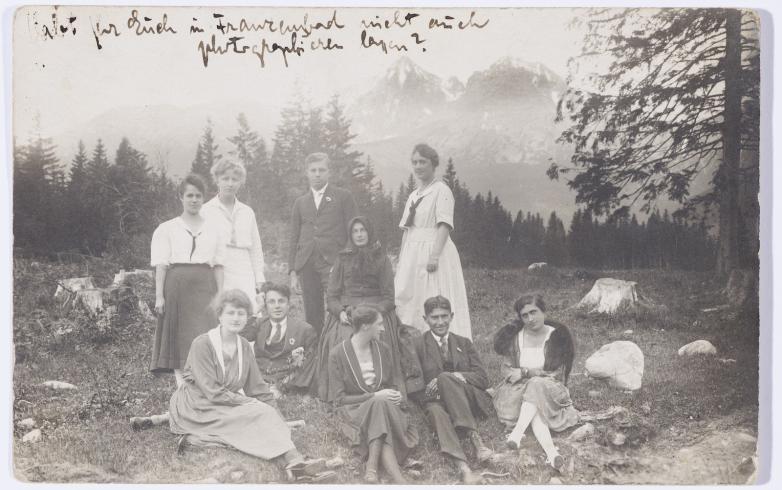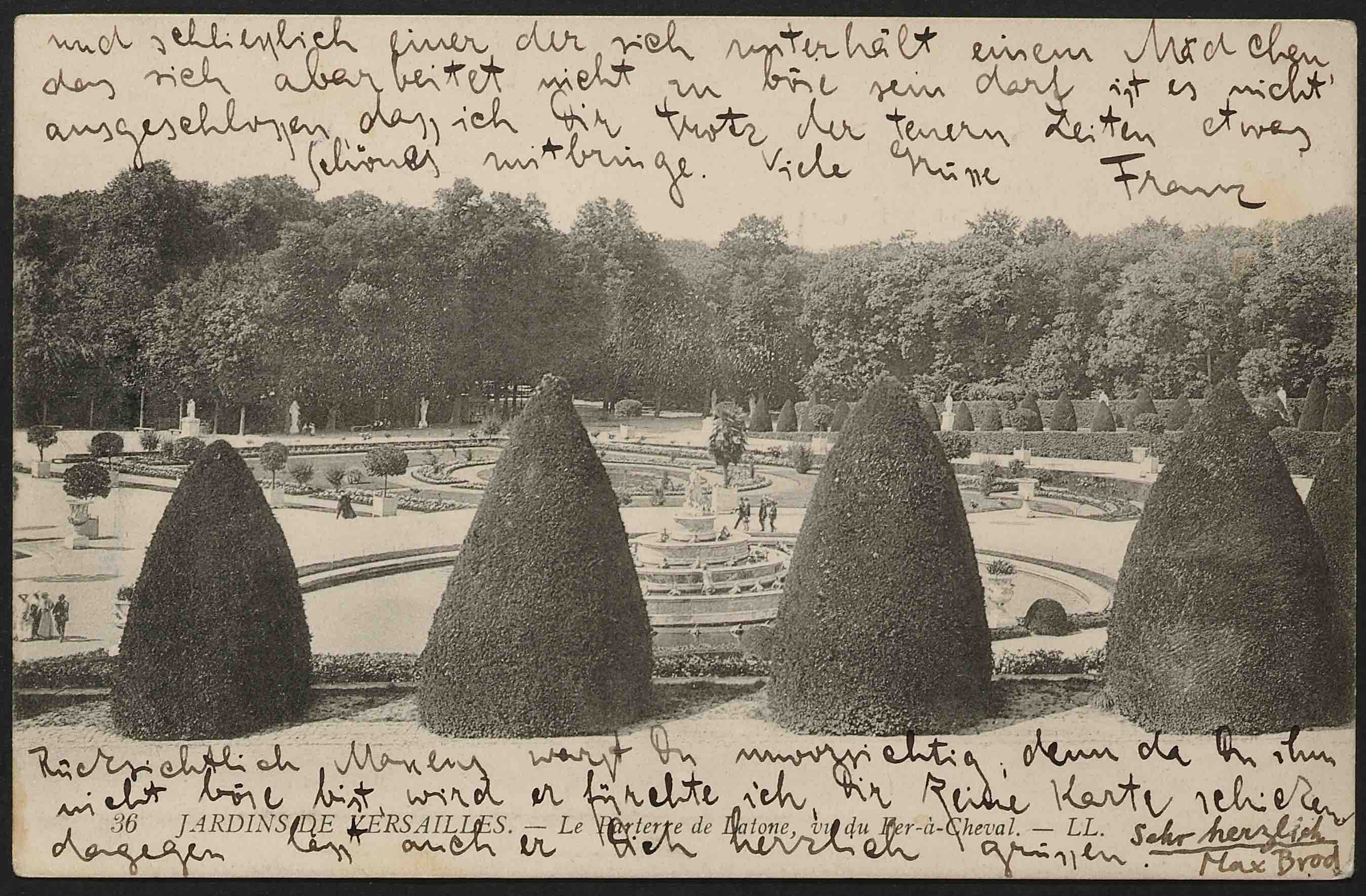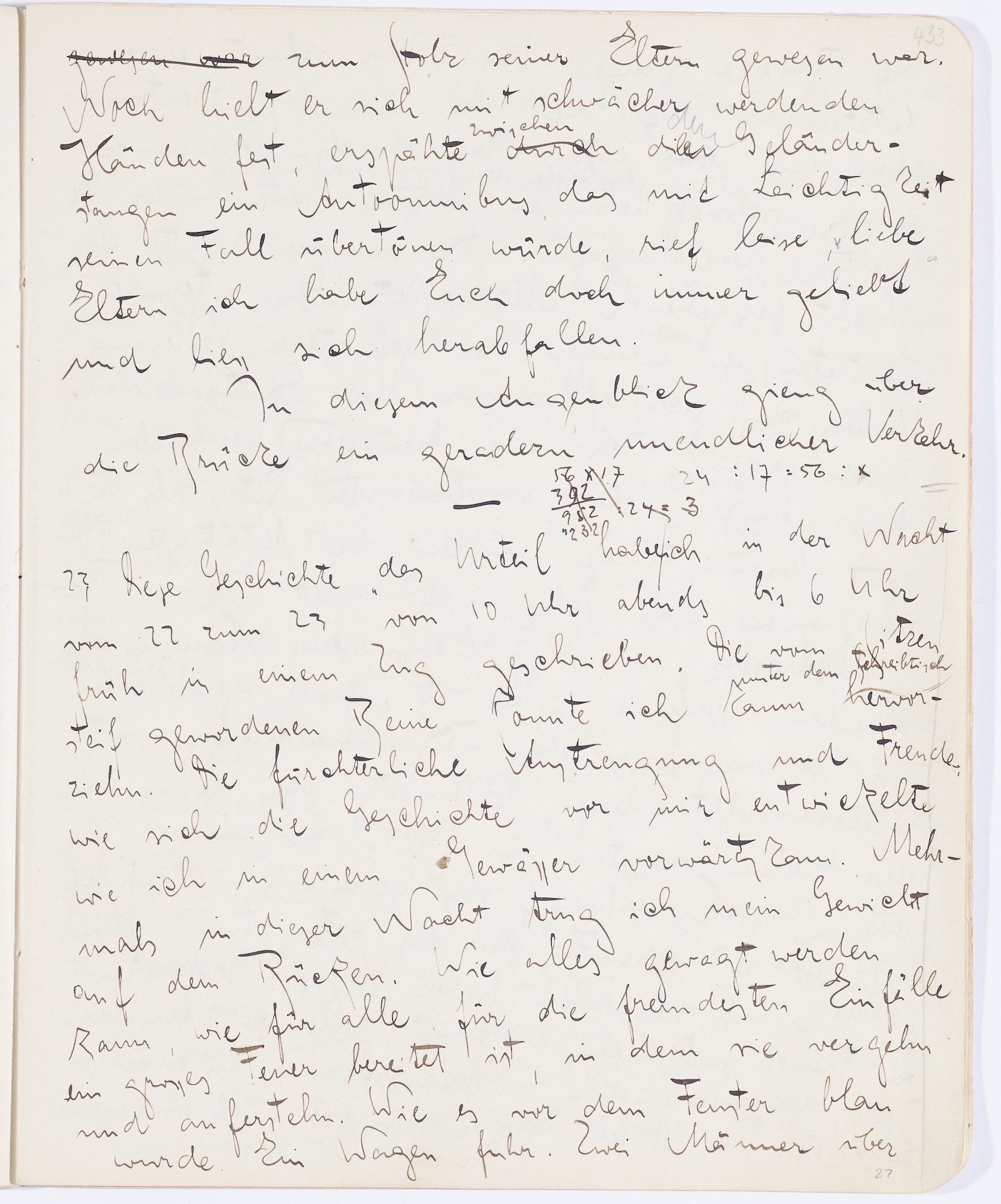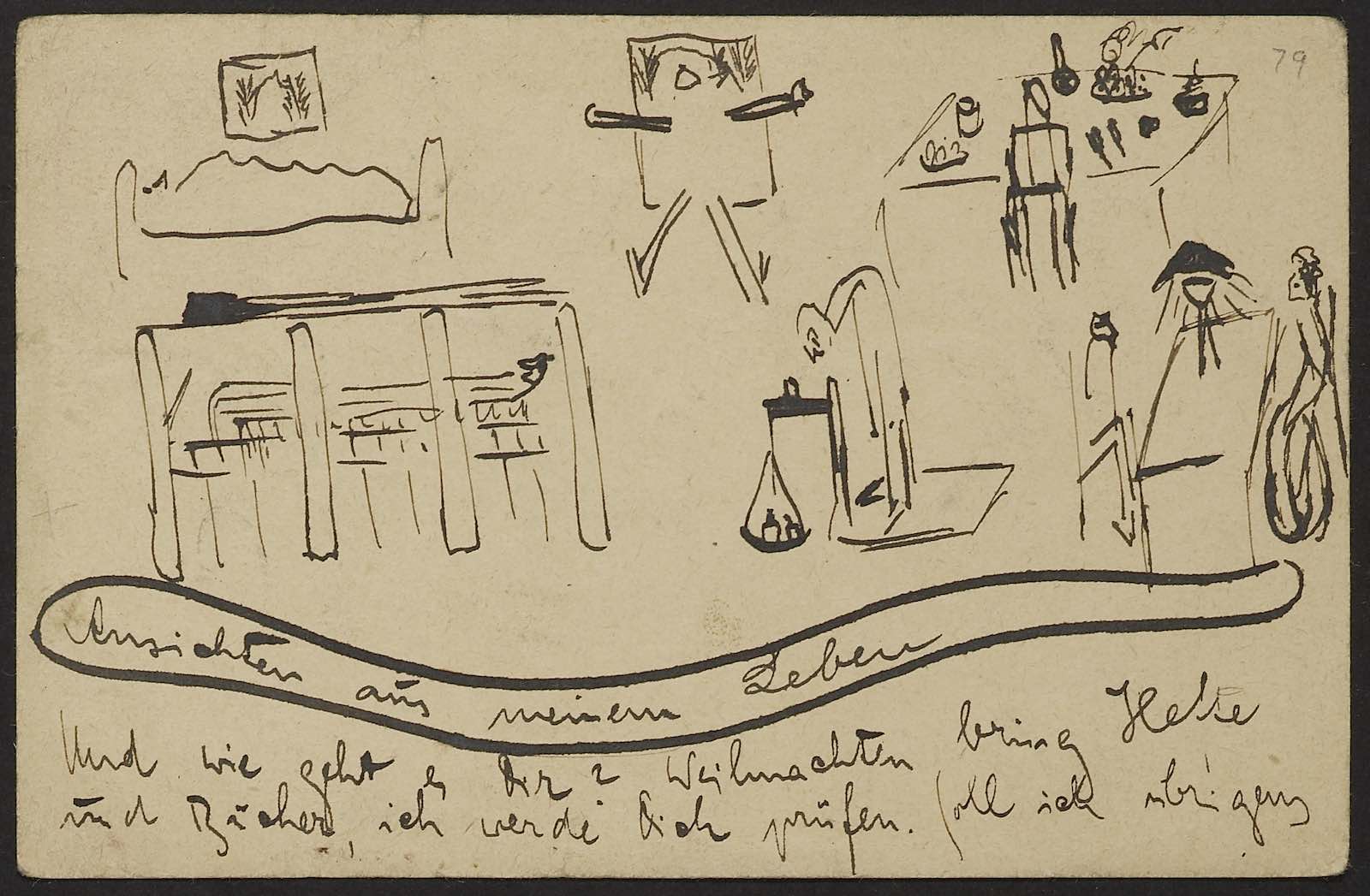The centre of the exhibition gallery is dedicated to The Metamorphosis. Alongside the original manuscript of the novella, the exhibition includes entomology illustrations that explore the possibilities of what the creature that used to be Gregor Samsa might have looked like, as well as modern reinterpretations of the story. Among them, thanks to a private loan, visitors will be able to see the original manuscript of The Cockroach, Ian McEwan’s satirical novella inspired by The Metamorphosis.
To complete the picture of Kafka’s world, the exhibition looks into the author’s travels, both real and imaginary. His notebooks and travel journals reveal how his travels in Western Europe and reading of the memoirs of Ejnar Mikkelsen’ Arctic expedition enabled him to practise descriptive writing, while his readings of a book of Chinese poetry and viewing the stereoscopic images he had access to, strengthened his fascination with remote spaces and made him aware of European colonialism.
Kafka's influence beyond his death is represented by the iconic painting by Andy Warhol Franz Kafka (1980), and a display of how the author’s work has been translated into numerous languages and a variety of formats, with a particular focus on Asia and the modern day interest in Kafka in Korea and Japan.
Professor Carolin Duttlinger, co-curator of the exhibition, said: "The centenary of Franz Kafka's death is a unique opportunity to celebrate his global legacy while also introducing his texts to a new generation of readers. We are very excited about the upcoming exhibition, which will tell the story of Kafka's life, times and works, including how his manuscripts ended up at the Bodleian Library in Oxford."



















